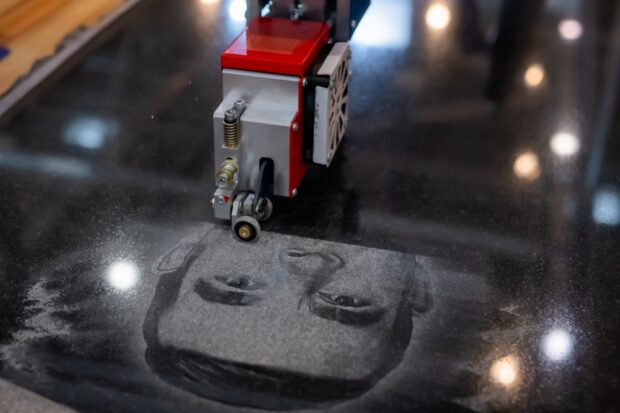One of the most noticeable changes in the way families honor loved ones today is the integration of digital memorialization. This approach blends traditional stone markers with interactive technology, creating a bridge between the past and the present. QR codes, small scannable codes etched into a headstone, are increasingly popular in modern cemeteries. When scanned, these codes link to a personalized webpage or memorial platform. Visitors can view photos, videos, family stories, and even messages left by others who knew the deceased.
The technology in cemetery monuments now transforms a physical marker into a living archive. It ensures that future generations can engage with the legacy of their loved ones in ways that static inscriptions cannot. Families often appreciate the flexibility to update these digital memorials over time, making them dynamic rather than fixed. This has not only expanded the way stories are told but also how they are shared, ensuring a richer connection for future generations.
Augmented and Virtual Reality in Memorial Spaces
Augmented reality (AR) and virtual reality (VR) are revolutionizing experiences across many industries, and cemetery monuments are no exception. With AR, visitors can point their smartphones at a monument and see a layered digital experience—biographical timelines, audio recordings, or even 3D recreations of significant life events. Virtual reality offers an even more immersive journey, allowing family members unable to visit a cemetery physically to experience the memorial site virtually.
The integration of this technology in cemetery monuments creates accessibility and inclusivity. Relatives across the world can gather virtually at the same time to participate in a memorial event. Museums and historical societies have also begun using AR and VR in cemetery contexts to highlight the lives of historically significant individuals, turning gravesites into educational touchpoints. This innovation ensures that cemeteries can serve as both personal spaces of remembrance and broader cultural sites of learning.
Eco-Friendly and Smart Materials
Sustainability is becoming a key concern in many aspects of life, and memorialization is no different. Advances in materials science are shaping how monuments are designed and built. Eco-friendly options such as biodegradable urns or headstones made from sustainable composites are emerging as alternatives to traditional granite or marble. These choices reduce environmental impact and align with the values of families who want memorials to reflect a loved one’s care for the earth.
Smart materials are also being introduced into the design of monuments. For example, stones embedded with solar-powered lighting systems can softly illuminate at night without requiring external electricity sources. Some designs even incorporate weather-resistant digital displays that can show images or messages, creating a personalized and evolving tribute. The marriage of sustainability and innovation ensures that the technology in cemetery monuments not only preserves memory but also aligns with contemporary values of environmental responsibility.
Personalized Design Through 3D Printing
3D printing has made remarkable strides in architecture, manufacturing, and healthcare, and now it is reshaping how cemetery monuments are created. Families are no longer limited to standardized headstone shapes and inscriptions. With 3D printing, artisans and designers can create intricate, customized monuments that reflect the individuality of the person being honored.
This technology allows for more freedom of expression, from sculptural designs that capture personal passions to detailed engravings that would be costly or time-consuming using traditional methods. The precision of 3D printing also means that families can review digital models before final production, ensuring every detail aligns with their vision. The result is a monument that is both innovative and deeply personal, representing a significant shift in how technology in cemetery monuments meets the emotional and creative needs of families.
The Role of Artificial Intelligence and Data Preservation
Artificial intelligence is increasingly playing a role in how memorials are designed and how stories are preserved. AI-powered platforms can compile and curate biographical content from photographs, documents, and interviews, creating comprehensive memorial pages linked to monuments. Families can even use AI to generate narrative histories, weaving together fragmented stories into cohesive digital biographies.
Additionally, AI supports the long-term preservation of data. Cloud-based memorial systems ensure that information linked to a monument is stored securely for future generations. These platforms often include interactive features, such as the ability for descendants to contribute to the memorial over time. By combining AI with cemetery monuments, families create enduring legacies that evolve with each passing generation, ensuring that no memory is lost to time.
AI also offers practical applications for cemeteries themselves. Predictive algorithms can help with maintenance schedules, space planning, and even locating gravesites in large or historic cemeteries. These operational improvements make cemeteries more efficient while enhancing the visitor experience.
Conclusion
The blending of tradition with technology in cemetery monuments reflects a broader cultural shift in how society remembers and honors its dead. Digital memorialization through QR codes, immersive experiences via AR and VR, sustainable materials, personalized 3D-printed designs, and AI-driven data preservation are all shaping the future of remembrance. These innovations ensure that monuments are no longer passive markers but active participants in storytelling and legacy building.
By adopting these technologies, cemeteries evolve from places of quiet mourning into dynamic spaces of connection, education, and sustainability. The transformation shows that honoring the past does not mean resisting change. Instead, it means embracing new tools that deepen our understanding of lives lived and the stories we pass forward. The technology in cemetery monuments is not only changing the game but also ensuring that remembrance is more inclusive, interactive, and enduring than ever before.

